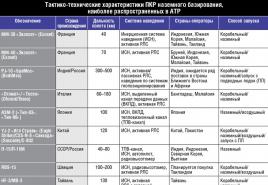With what value B is identically equal to the expression. Identically equal expressions: definition, examples
After we dealt with the concept of identities, you can move to the study of identically equal expressions. The purpose of this article is to explain what it is, and to show on the examples, which expressions will be identically equal to the other.
Identically equal expressions: definition
The concept of identically equal expressions is usually studied together with the concept of identity within school Course Algebra. Let us give the basic definition taken from one tutorial:
Definition 1.
Identically equal To each other there will be such expressions that will be the same in any possible values \u200b\u200bof the variables included in their composition.
Also identically equal are such numerical expressions that will be answered by the same meanings.
This is a fairly broad definition, which will be faithful to all the whole expressions, the meaning of which, when changing the values \u200b\u200bof variables, does not change. However, later there is a need to clarify this definition, since in addition to the whole there are other types of expressions that will not make sense at certain variables. From here there is a notion of admissibility and inadmissibility of certain variables, as well as the need to determine the area of \u200b\u200bpermissible values. We formulate a refined definition.
Definition 2.
Identically equal expressions - These are the expressions whose values \u200b\u200bare equal to each other with any permissible values \u200b\u200bof the variables included in their composition. Numerical expressions will be identical equal to each other provided the same values.
The phrase "with any valid values \u200b\u200bof variables" indicates all those values \u200b\u200bof variables in which both expressions will make sense. This provision we will explain later when we give examples of identically equal expressions.
You can also specify such a definition:
Definition 3.
Identically equal expressions are called expressions located in one identity on the left and right side.
Examples of expressions identically equal to each other
Using definitions, the data is higher, consider several examples of such expressions.
To begin with, take numerical expressions.
Example 1.
So, 2 + 4 and 4 + 2 will be identically equal to each other, since their results will be equal (6 and 6).
Example 2.
Similarly, the expressions 3 and 30: 10, (2 2) 3 and 2 6 are identical (2) 3 (for calculating the value of the last expressions, you need to know the degree properties).
Example 3.
But the expressions 4 - 2 and 9 - 1 will not be equal, since their values \u200b\u200bare different.
Let us turn to the examples of alphabetic expressions. We identically equal will be A + B and B + A, and this does not depend on the values \u200b\u200bof the variables (the equality of expressions in this case is determined by the proliferation property of the addition).
Example 4.
For example, if A is equal to 4, and b - 5, the results will still be the same.
Another example of identically equal expressions with letters - 0 · x · y · z and 0. Whatever the values \u200b\u200bof the variables in this case, being multiplied by 0, they will give 0. Unequal expressions - 6 · x and 8 · x, since they will not be equal at any x.
In the event that the areas of permissible values \u200b\u200bof variables will coincide, for example, in expressions A + 6 and 6 + a or · b · 0 and 0, or x 4 and x, and the values \u200b\u200bof the expressions themselves will be equal to any variables, then such Expressions are considered identically equal. So, a + 8 \u003d 8 + a with any value a, and a · b · 0 \u003d 0, too, since multiplication by 0 of any number gives as a result of 0. Expressions x 4 and x will be identical equal to any x from the interval [0, + ∞).
But the area of \u200b\u200bpermissible value in one expression may differ from the other area.
Example 5.
For example, take two expressions: x - 1 and x - 1 · x x. For the first of them, the area of \u200b\u200bpermissible values \u200b\u200bX will be all sets of valid numbers, and for the second, the set of all the current numbers, with the exception of zero, because then we get 0 in the denominator, and this division is not defined. These two expressions have a common area of \u200b\u200bvalues \u200b\u200bformed by the intersection of two separate areas. It can be concluded that both expressions x - 1 · x x and x - 1 will make sense at any valid values \u200b\u200bof variables, except for 0.
The main property of the fraction also allows us to conclude that x - 1 · x x and x - 1 will be equal to any x that is not 0. So, on the total area of \u200b\u200bpermissible values, these expressions will be identically equal to each other, and with any valid X, it is impossible to talk about identical equality.
If we replace one expression to another, which is identically equal to it, this process is called identical conversion. This concept is very important, and we will talk about it in detail in a separate material.
If you notice a mistake in the text, please select it and press Ctrl + Enter
Two expressions are called identically equal On the set, if they make sense on this set and all their respective values \u200b\u200bare equal.
Equality in which the left and right parts - identically equal expressions, called identity.
Replacement of one expression to another identically equal to it in this set is called identical transformation of expression.
A task. Find the expression field area.
Decision. Since the expression is a fraction, it is necessary to find the values \u200b\u200bof the variable to find its definition area. h.At which the denominator adds to zero, and exclude them. Deciding equation h.2 - 9 \u003d 0, find that h.\u003d -3 I. h.\u003d 3. Consequently, the scope of determination of this expression consists of all numbers other than -3 and from 3. To designate it through H.You can write:
H.\u003d (- ¥; -3) è (-3; 3) è (3; + ¥).
A task. Are the expressions and h.- 2 identically equal: a) on the set R.; b) on a plurality of integers other than zero?
Decision. a) on the set R. These expressions are not identically equal, since h.\u003d 0 expression does not matter, but an expression h. - 2 has a value -2.
b) on the set of integers other than zero, these expressions are identically equal, since \u003d ![]() .
.
A task.Under what values h. are identities of the following equality:
but) ![]() ; b).
; b).
Decision. a) equality is a identity if;
b) Equality is a identity if.
Both parts of which are identically equal expressions. Identities are divided into alphabetic and numeric.
Identical expressions
Two algebraic expressions are called identical (or identically equal) If at any numerical values \u200b\u200bof the letters they have the same numerical value. Such, for example, expressions:
x.(5 + x.) and 5. x. + x. 2
Both expressions presented, with any meaning x. They will be equal to each other, so they can be called identical or identically equal.
Also identical can be called numerical expressions equal to each other. For example:
20 - 8 and 10 + 2
Console and numerical identities
Literal identity - It is equality that is valid for any values \u200b\u200bof the letters of it. In other words, such equality in which both parts are identically equal expressions, for example:
(a. + b.)m. = aM. + bM.
(a. + b.) 2 = a. 2 + 2aB + b. 2
Numerical identity - This equality containing only numbers expressed by the numbers in which both parts have the same numerical value. For example:
4 + 5 + 2 = 3 + 8
5 · (4 + 6) \u003d 50
Identical transformations of expressions
All algebraic actions are the transformation of one algebraic expression to another, identical to the first.
When calculating the value of the expression, disclosure of brackets, making a common factor behind the brackets and in a number of other cases, some expressions are replaced by other identically equal to them. Replacement of one expression to others identically equal to him, called identical transformation of expression or simply transformation of the expression. All express conversions are performed based on the properties of the number of numbers.
Consider the identical transformation of the expression on the example of a general factor for brackets:
10x. - 7x. + 3x. = (10 - 7 + 3)x. = 6x.
Having received an idea of \u200b\u200bidentities, it is logical to go to acquaintance with. In this article, we will answer the question that such identically equal expressions, as well as in the examples we will understand which expressions are identically equal, and which - no.
Navigating page.
What is identically equal expressions?
The definition of identically equal expressions is given in parallel with the definition of the identity. This happens on the lessons of algebra in grade 7. In the textbook on algebra for the 7 classes of the author Yu. N. Makarychev, this wording is given:
Definition.
- These are the expressions whose values \u200b\u200bare equal with any values \u200b\u200bof the variables included in them. Numerical expressions that correspond to the same values \u200b\u200bare also called identically equal.
This definition is used up to grade 8, it is valid for integer expressions, as they make sense for any values \u200b\u200bof the variables included in them. And in grade 8, the definition of identically equal expressions is specified. Let us explain what it is connected with.
In grade 8, the study of other types of expressions, which, in contrast to the whole expressions, may not make sense at some values \u200b\u200bof variables. This forces it to impose the definitions of permissible and unacceptable values \u200b\u200bof variables, as well as the area of \u200b\u200bpermissible values \u200b\u200bof the OTZ variable, and as a result - to clarify the definition of identically equal expressions.
Definition.
Two expressions whose values \u200b\u200bare equal with all valid values \u200b\u200bof the variables included in them are called identically equal expressions. Two numeric expressions that have the same values \u200b\u200bare also called identically equal.
IN this definition Identally equal expressions should clarify the meaning of the phrase "with all the permissible values \u200b\u200bof the variables that are included in them." It implies all such values \u200b\u200bof variables in which both identically equal expressions simultaneously make sense. This idea is explained in the next paragraph, considering examples.
The definition of identically equal expressions in the textbook Mordkovich A. G. is a little different:
Definition.
Identically equal expressions - These are the expressions in the left and right parts of the identity.
In meaning, this and the previous definition coincide.
Examples of identically equal expressions
The definitions entered in the previous paragraph allow examples of identically equal expressions.
Let's start with identically equal numerical expressions. Numeric expressions 1 + 2 and 2 + 1 are identically equal, since they correspond to equal values \u200b\u200bof 3 and 3. Also identically equal to expressions 5 and 30: 6, as well as expressions (2 2) 3 and 2 6 (the values \u200b\u200bof the latest expressions are equal to force). But the numeric expressions 3 + 2 and 3-2 are not identically equal, since it corresponds to values \u200b\u200b5 and 1, respectively, and they are not equal.
Now we will give examples of identically equal expressions with variables. Such are the expressions A + B and B + A. Indeed, with any values \u200b\u200bof variables a and b, recorded expressions take the same values \u200b\u200b(which follows from numbers). For example, at a \u003d 1 and b \u003d 2, we have a + b \u003d 1 + 2 \u003d 3 and b + a \u003d 2 + 1 \u003d 3. For any other values \u200b\u200bof variables A and B, we also obtain equal values \u200b\u200bof these expressions. Expressions 0 · X · y · z and 0 are also identically equal for any values \u200b\u200bof the variables x, y and z. But the expressions 2 · x and 3 · x are not identically equal, since, for example, with x \u003d 1, their values \u200b\u200bare not equal. Indeed, at x \u003d 1, the expression 2 · x is 2 · 1 \u003d 2, and the expression 3 · x is 3 · 1 \u003d 3.
When the values \u200b\u200bof permissible values \u200b\u200bof variables in expressions coincide, as, for example, in expressions A + 1 and 1 + A, or A · b · 0 and 0, or, and the values \u200b\u200bof these expressions are equal to all values \u200b\u200bof the variables from these areas, then Everything is clear - these expressions are identically equal with all the permissible values \u200b\u200bof the variables included in them. So A + 1≡1 + A for any A, expressions A · b · 0 and 0 are identically equal for any values \u200b\u200bof variables a and b, and expressions are identically equal at all x; Ed. S. A. Telikovsky. - 17th ed. - M.: Enlightenment, 2008. - 240 s. : IL. - ISBN 978-5-09-019315-3.
Consider two equalities:
1. A 12 * A 3 \u003d A 7 * A 8
This equality will be performed at any values \u200b\u200bof the variable a. The area of \u200b\u200bpermissible values \u200b\u200bfor that equality will be all many real numbers.
2. A 12: A 3 \u003d A 2 * A 7.
This inequality will be performed for all values \u200b\u200bof the variable A, except for zero. The area of \u200b\u200bpermissible values \u200b\u200bfor this inequality will be all many real numbers, except for zero.
Each of these equalities can be argued that it will be true for any permissible values \u200b\u200bof variables a. Such equalities in mathematics are called identities.
The concept of identity
The identity is equality faithful in any permissible values \u200b\u200bof variables. If in this equality to substitute, instead of variables, any valid values, then the correct numerical equality should be obtained.
It is worth noting that faithful numeric equality are also identities. Identities, for example, will be the properties of actions on numbers.
3. A + B \u003d B + A;
4. A + (B + C) \u003d (A + B) + C;
6. A * (B * C) \u003d (A * B) * C;
7. A * (B + C) \u003d A * B + A * C;
11. A * (- 1) \u003d -a.
If two expressions with any valid variables are respectively equal, then such expressions are called identically equal. Below are several examples of identically equal expressions:
1. (A 2) 4 and A 8;
2. A * b * (- a ^ 2 * b) and - 3 * b 2;
3. ((x 3 * x 8) / x) and x 10.
We can always replace one expression by any other expression, identically equal to the first. Such a replacement will be identical conversion.
Examples of identities
Example 1: The following equalities are identities:
1. A + 5 \u003d 5 + A;
2. A * (- b) \u003d -a * b;
3. 3 * A * 3 * B \u003d 9 * A * B;
Not all the above expressions will be identities. Of these equalities, the identities are only 1.2 and 3 equality. Whatever numbers we do not put in them, instead of variables a and b, we still have faithful numeric equality.
But 4 equality is no longer identity. Because not with all permissible values, this equality will be performed. For example, at values \u200b\u200bA \u003d 5 and B \u003d 2, the following result will be:
This equality is not true, since the number 3 is not equal to the number -3.







